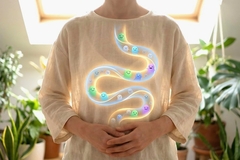
- Industry news
Industry news
- Category news
- Reports
- Key trends
- Multimedia
Multimedia
- Journal
- Events
- Suppliers
Suppliers
- Home
- Industry news
Industry news
- Category news
- Reports
- Key trends
- Multimedia
Multimedia
- Events
- Suppliers
Suppliers
Gut bacteria producing natural GLP-1 may induce fat loss and regulate blood sugar

Scientists have discovered a protein-producing bacterial strain, Ruminococcus torques, that could play a role in fat metabolism with the potential to open a new class of biological drugs known as pharmabiotics. They say the two proteins resemble the hormone irisin, released by muscles during exercise, which breaks down fat.
The study, published in Nature Microbiology, found that Rordep1 and Rordep2 (RUMTOR-derived peptide) proteins also affect people’s hormonal balance, weight, bone density, and blood sugar levels.
“We found that the number of Rordep-producing bacteria can vary by up to 100,000 times between individuals, and that people with high levels of these bacteria tend to be leaner,” says lead author Yong Fan, assistant professor at the Novo Nordisk Foundation Center for Basic Metabolic Research at the University of Copenhagen, Denmark.
According to the study, Rordep proteins trigger the body to produce hormones such as GLP-1 and PYY. They also suppress the hormone GIP, which may cause weight gain, while burning fat directly.
“Looking ten to 15 years ahead, our goal is to test the potential of Rordep-producing bacteria for both prevention and treatment,” comments project leader, senior author, and professor Oluf Pedersen at the University of Copenhagen.
“We want to investigate whether they can function as a second-generation probiotic — used as a dietary supplement to prevent common chronic diseases — and whether Rordep-proteins in modified forms can be developed into future medicines for cardiovascular disease, obesity, diabetes, and osteoporosis.”
Clinical trials in process
Fan explains that researchers saw decreased weight gain, lower blood sugar, and increased bone density in rats and mice given either the Rordep proteins or gut bacteria that produce the protein. “What’s exciting is that this is the first time we’ve mapped gut bacteria that alter our hormonal balance.”
The first clinical trials are already underway, through a collaboration with the biotech company GutCRINE, launched by University of Copenhagen researchers two years ago. One study administers live bacteria that produce Rordeps to participants, while the other examines the effects of the Rordep1 protein.
Randomized clinical trials are now investigating the physiological role of Rordeps in healthy people, as well as their potential use in native or engineered forms for the prevention and treatment of common human metabolic disorders.
“We’re now translating our basic research into human studies to explore whether Rordep-producing bacteria or the Rordep proteins — either in their natural or chemically modified form — can serve as the foundation for a new class of biological drugs known as pharmabiotics,” concludes Pedersen.

















